Cards In This Set
| Front | Back |
|
Lipid granules
|
1)These are easily identifiable because of their high electron density, large size, and irregular outlines.
2)They are extremely numerous in the endocrine cells of the adrenal cortex and in the lutein cells of the ovary.
3)The lipid granules of liver and pancreatic cells often have a close relationship to neighboring mitochondria (Mi), and this relationship has been interpreted as the structural evidence for enzymatic interaction between the mitochondrion and the lipid. (Liver cell)
|
|
Glycogen vs Ribosome
|
Glycogen granules (Gl) are easily identified after staining with lead, for instance. Their diameter is slightly larger than that of the nearby ribosomes (Ri) and averages 20 nm. The glycogen granules usually occur in clusters and stain more intensely than the ribosomes. Other nearby structures are mitochondria (Mi) and a small microbody (Mb, peroxisome). (Liver cell.)
|
|
Lipofuscin
|
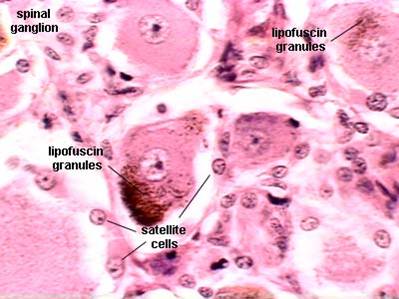 Yellow-to-brown pigment; membrane bound, electron-dense, often containing lipid droplets; also called age pigments since the amount increases with age. Lipofuscins are formed from fusion of several residual bodies; It is most common in nondividing cells (cardiac muscle cells, neurons and hepatocytes): dorsal root ganglion |
|
Membrane Lipid Molecules
|
1)Phospholipid
2)Glycolipid
3) Cholesterol
|
|
Glycocalyx
|
1)Maintain the structural integrity of the cell.
2) Protect the cell from interaction with inappropriate proteins, from chemical injury and physical injury.
3) Aid in attachment of cells to extracellular matrix components.
4) Facilitate cell-cell recognition and interaction (cell surface antigen: cell-cell recognition and adhesion).
|
|
Membrane Fluidity
|
Affected By:
1)Temperature( high temp= high fluidity)
2)Saturation of the fatty acyl tails (decrease saturation= higher fluidity)
3)Cholesterol(increase cholesterol=decrease fluidity)
4)Lengeth of fatty acyl tails( increase in length= decrease in fluidity)
|
|
Phagocytosis
|
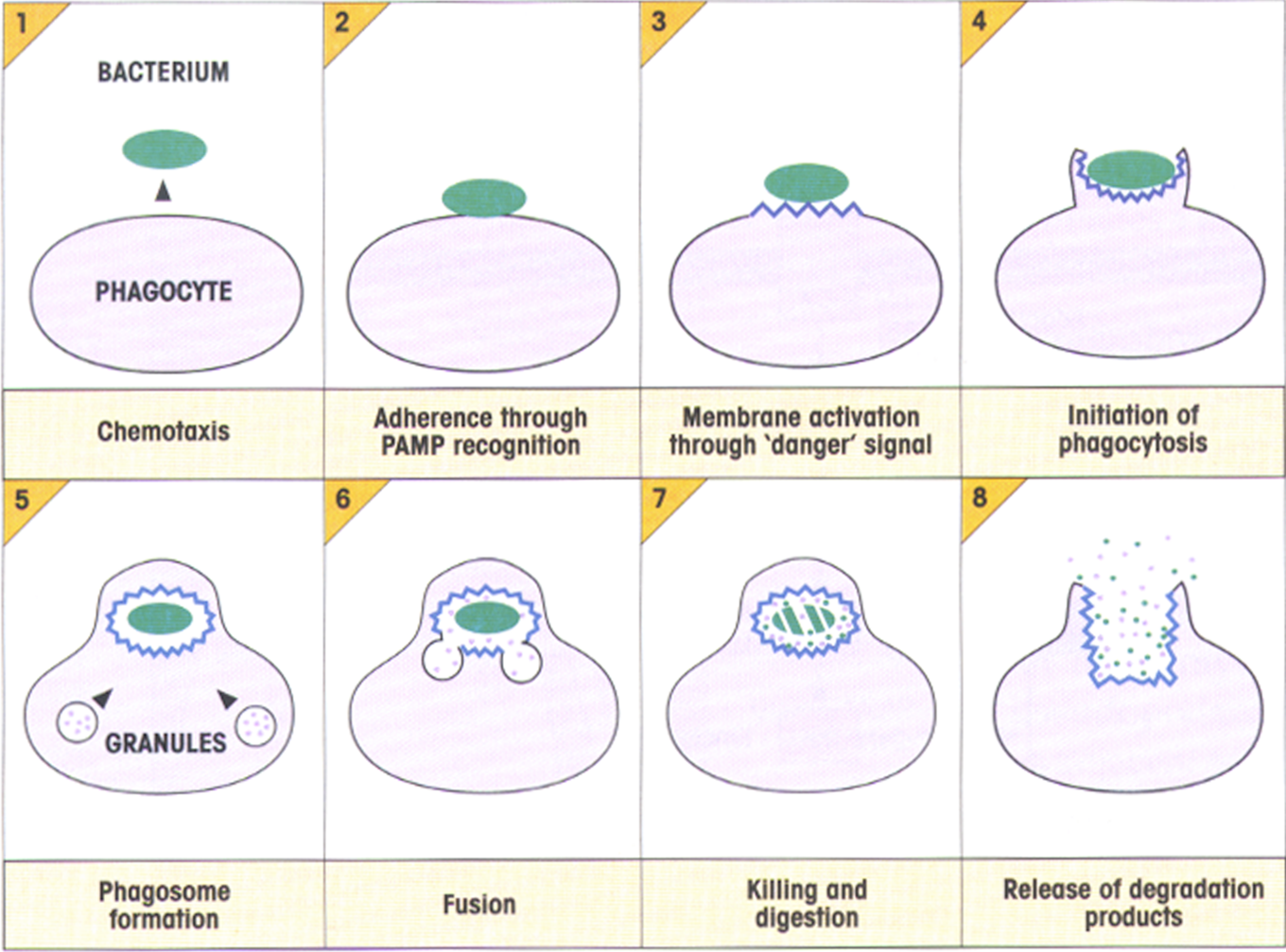 A |
|
Dynamin
|
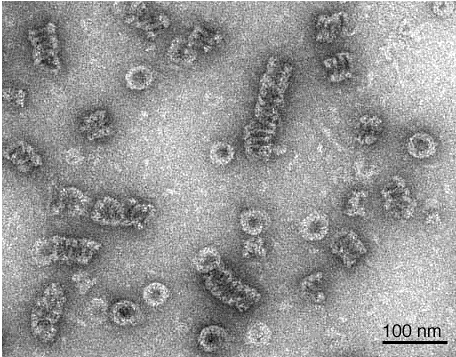 1) Receptor Mediated endocytosis 2) a small GTP-binding protein (a GTPase) assembles as a ring around the neck of the deeply invaginated coated pit, or budding vesicle. Once assembled, the dynamin molecules hydrolyze their bound GTP and with the help of other proteins recruited to the area, pinch off the vesicle from the membrane. |
|
Clathrin-coated vesicles
|
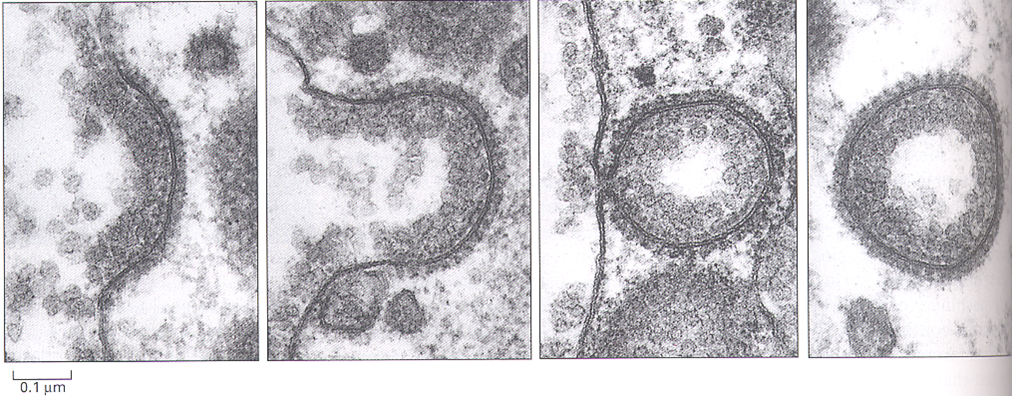 1)Receptor-mediated Endocytosis: formation of clathrin-coated vesicles from the plasma membrane 2)The clathrin-coated pits and vesicles shown are larger than those in normal-sized cells. They are involved in taking up lipoprotein particles into a very large hen oocyte to form yolk. |
|
Mitochondria
|
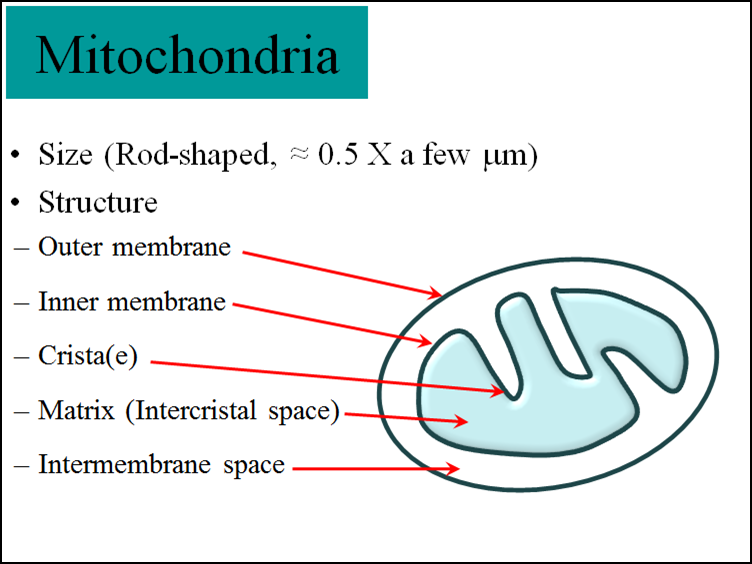 1)The outer mitochondria membrane contains porin proteins that form large aqueous channels and is permeable to anything < 10kD. The contents of the intermembrane space resembles the cytosol. 2) Matrix = intercristal space, contains circular DNA and rRNA, and a complete transcription and translation system |
|
Organelles in cell
|
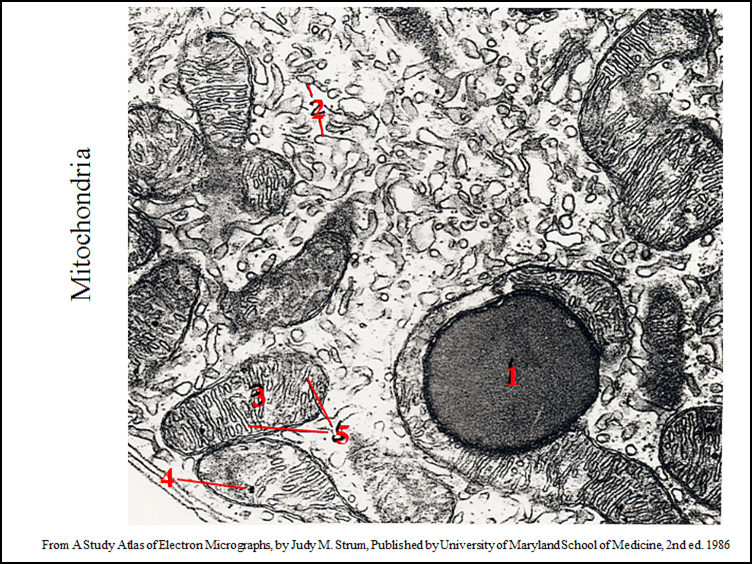 1. A lipid droplet 2. The smooth endoplasmic reticulum 3. Mitochondria 4. Mitochondria matrix granule 5. Cristae |
|
Chemiosmotic Coupling
|
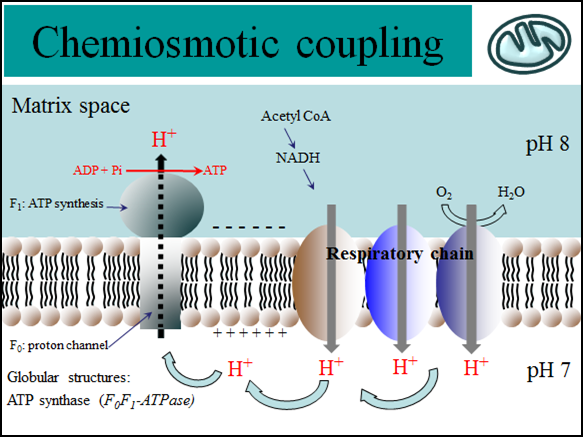 Chemiosmotic hypothesis: To produce ATP through oxidative phosphorylation. 1. Production of Acetyl-coA, NADH in matrix. 2. Electrons from NADH are transferred through the respiratory chains in inner membrane. 3. Protons are pumped from the matrix side to the intermembrane space, resulting in generation of a proton-motive force: pH gradient and membrane potential. 4. Protons flow back to the matrix side through ATP synthase. 5. ATP synthesized and released. |
|
Ribosomes
|
1) Size: 20x30nm
2)Composition: rRNA and protiens
3)Structure: large and small subunits
4) Function: Site of protien synthesis. Production of protien through mRNA translation
|
|
Smooth Endoplasmic Reticulum
|
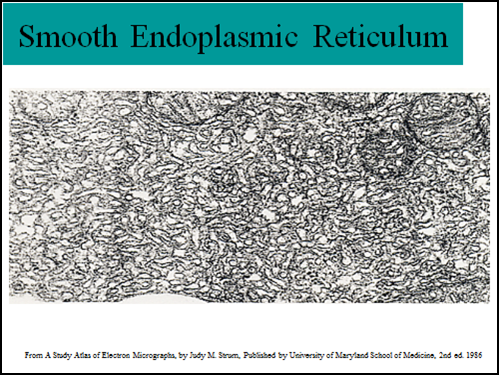 1)Lipid and carbohydrate synthesis. 2) Detoxification (alcohol, babiturates) and breakdown processes. 3) Sarcoplasmic reticulm in muscle cells is a specialized form of SER. It functions in sequestering calcium ions fro the cytosol, and assisting in the control of muscle contraction. |
|
Rough Endoplasmic Reticulum
|
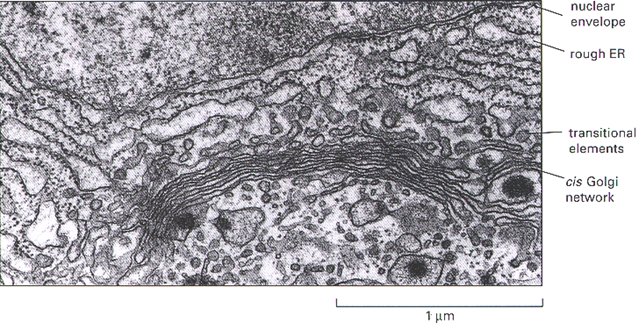 mediates protien synthesis and post translational modification of protiens |



